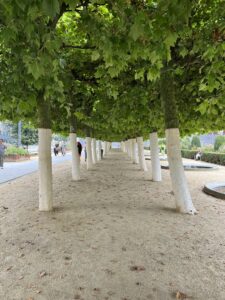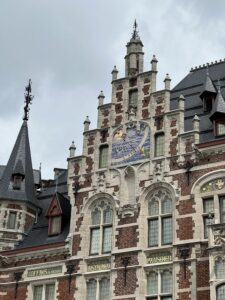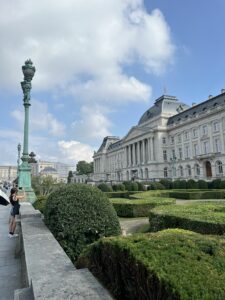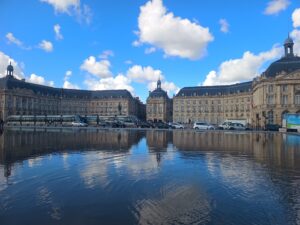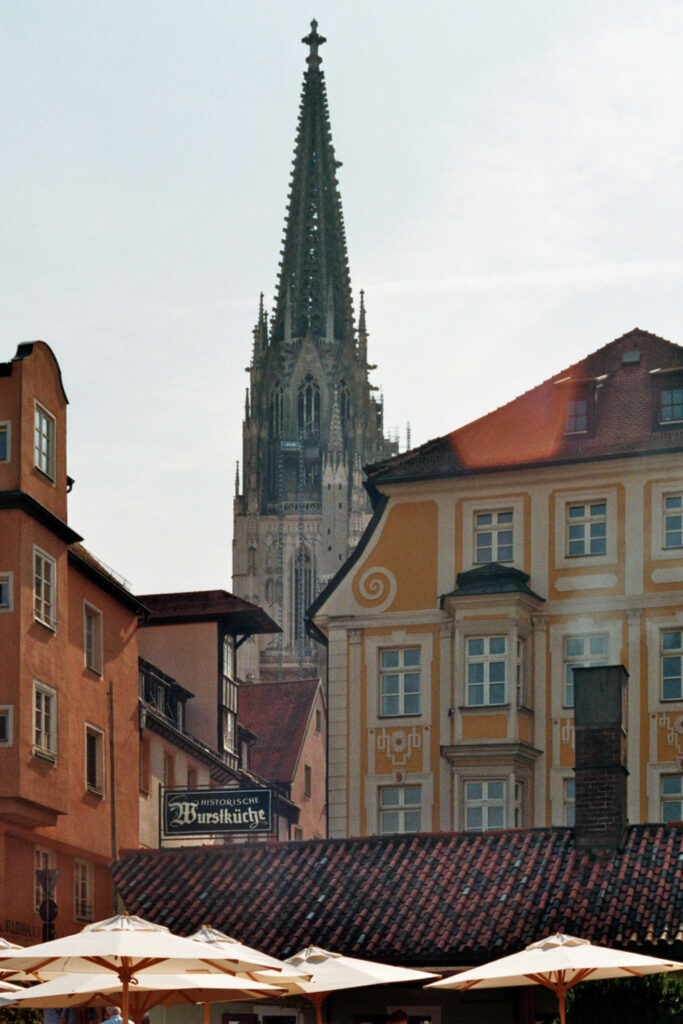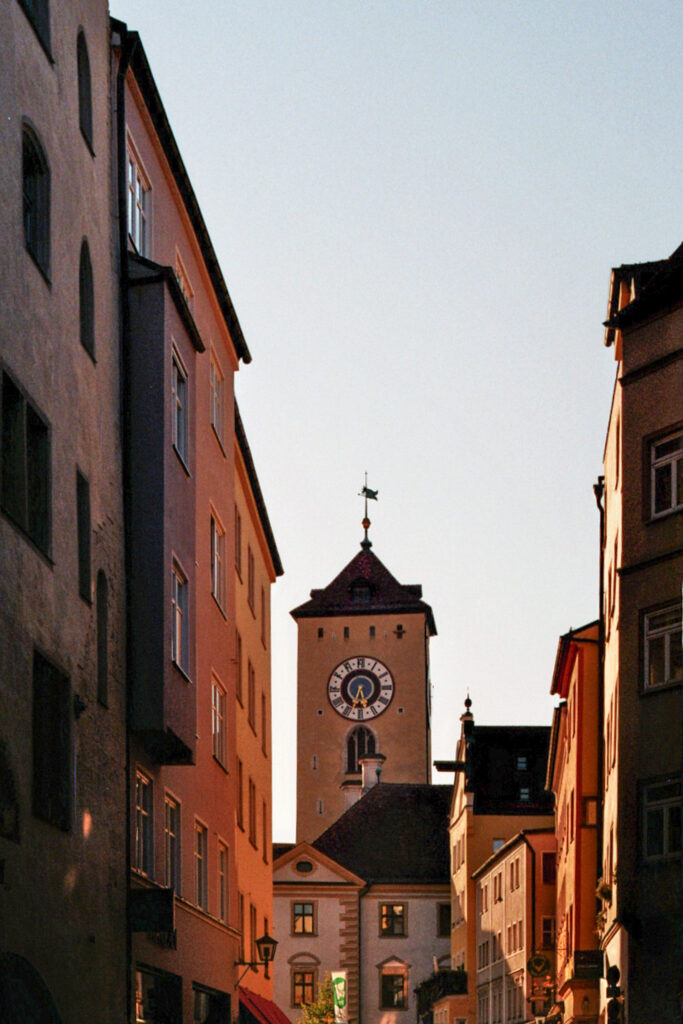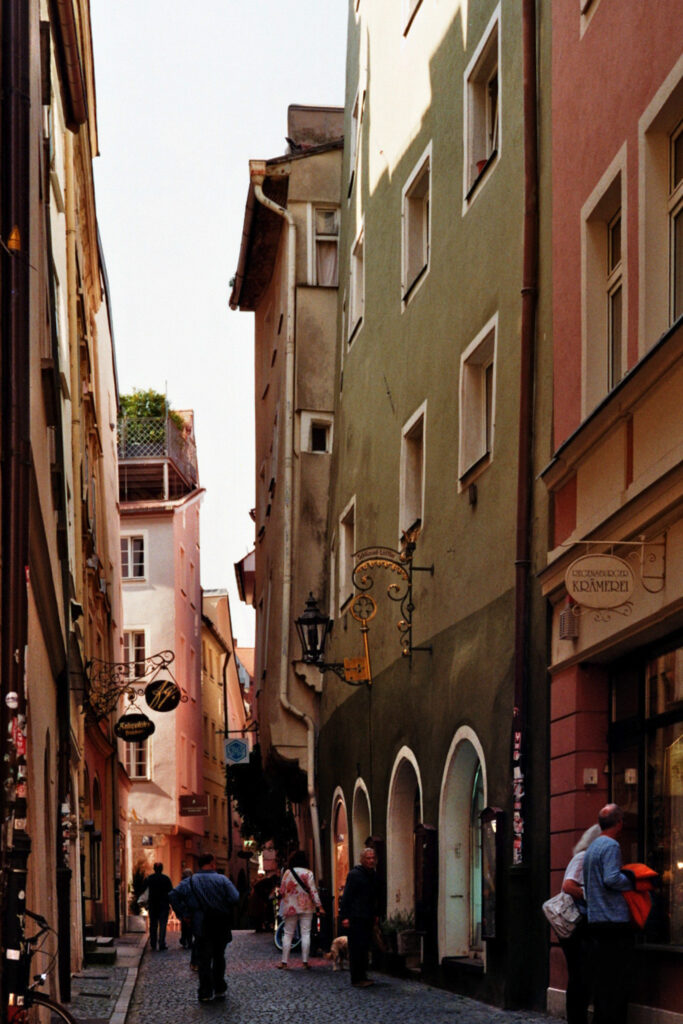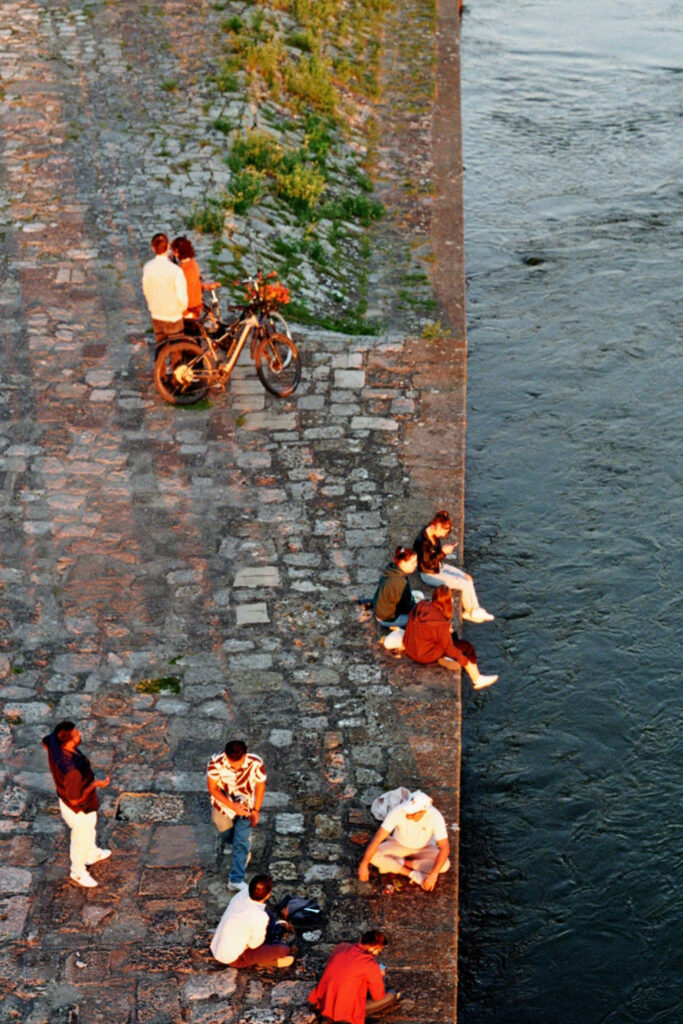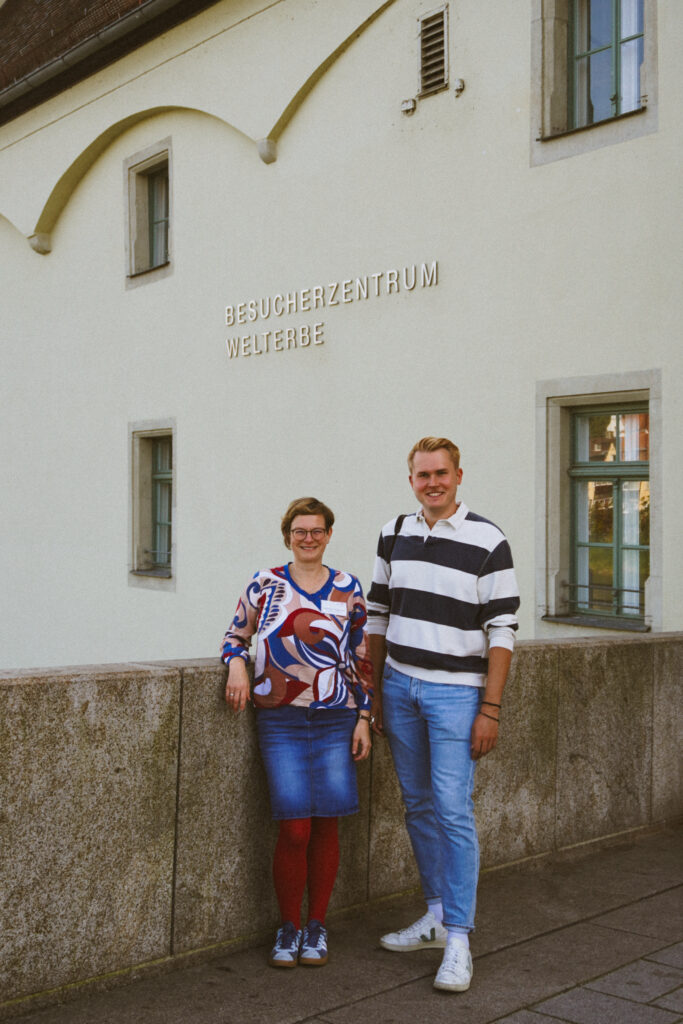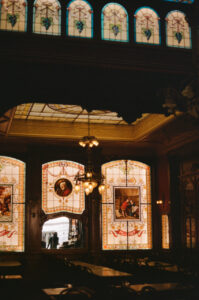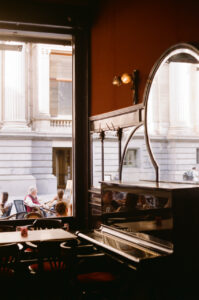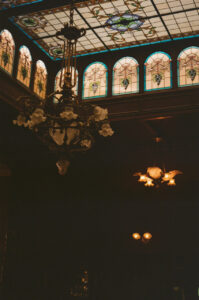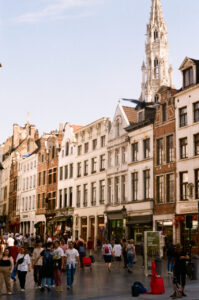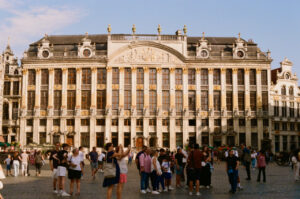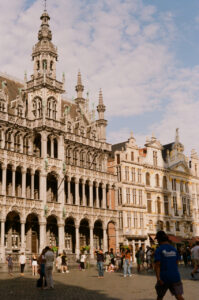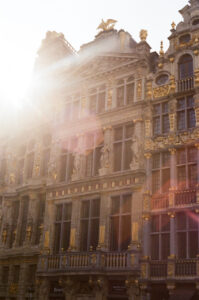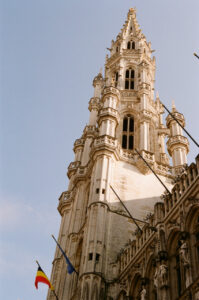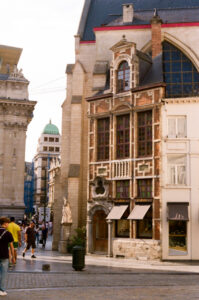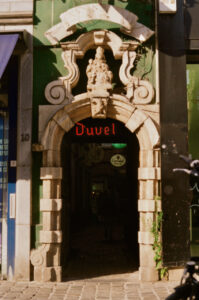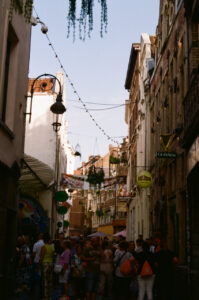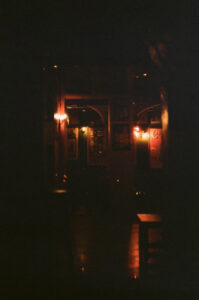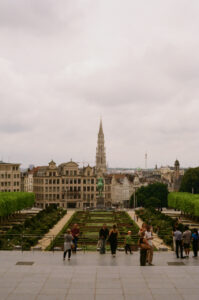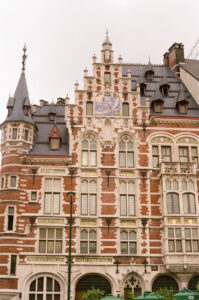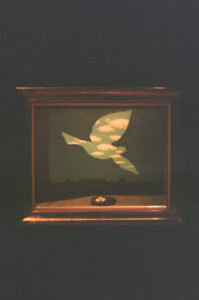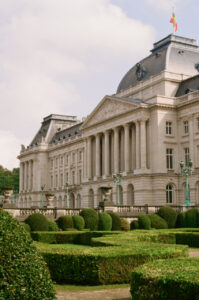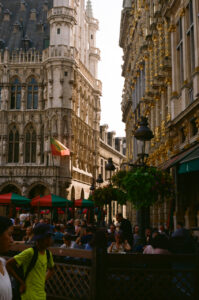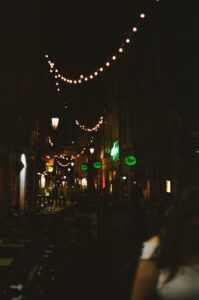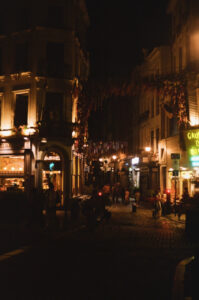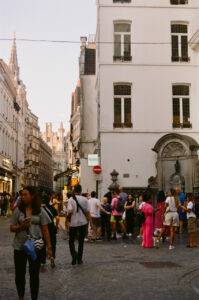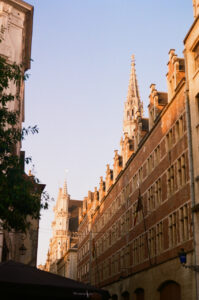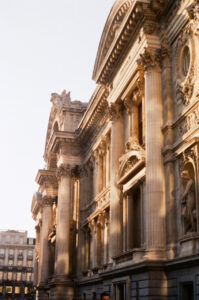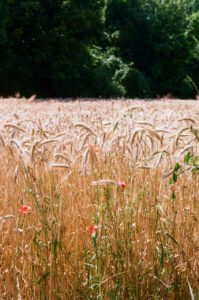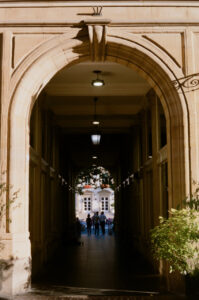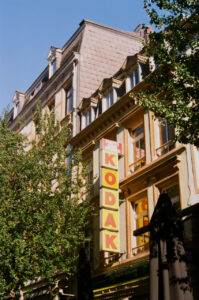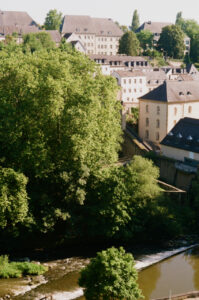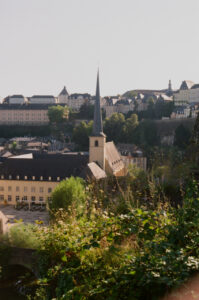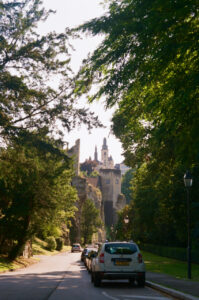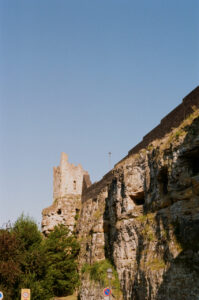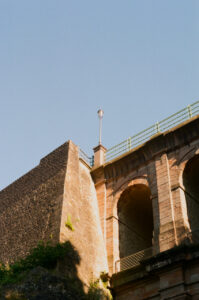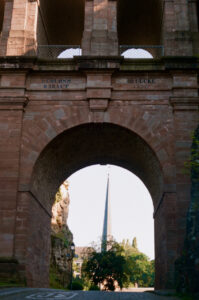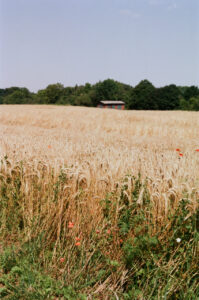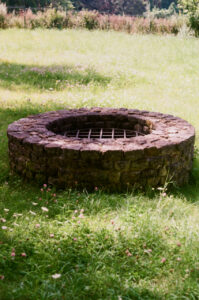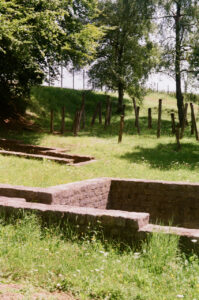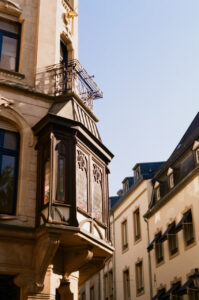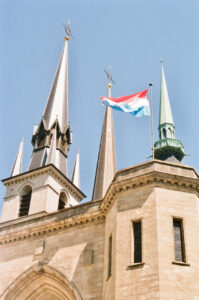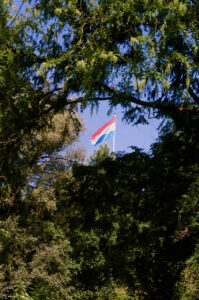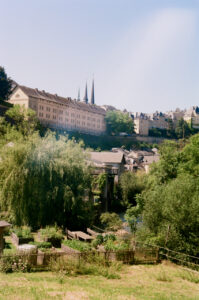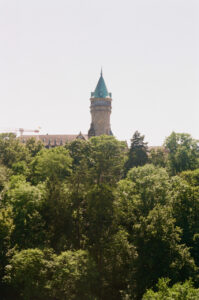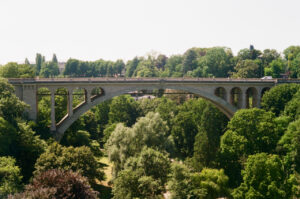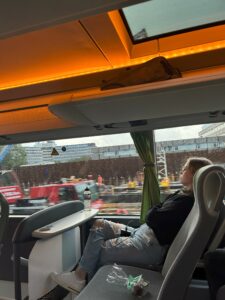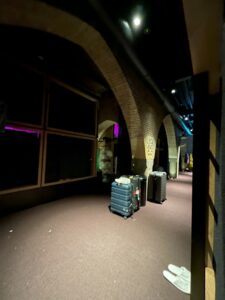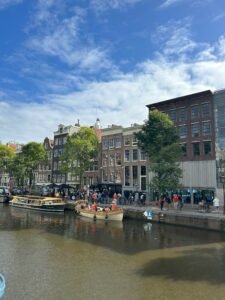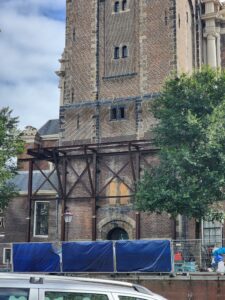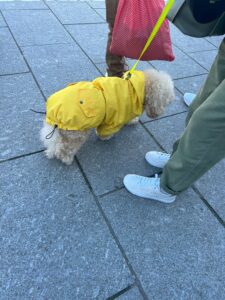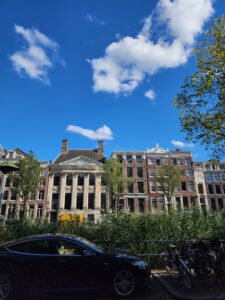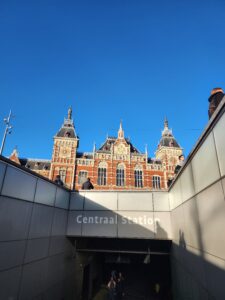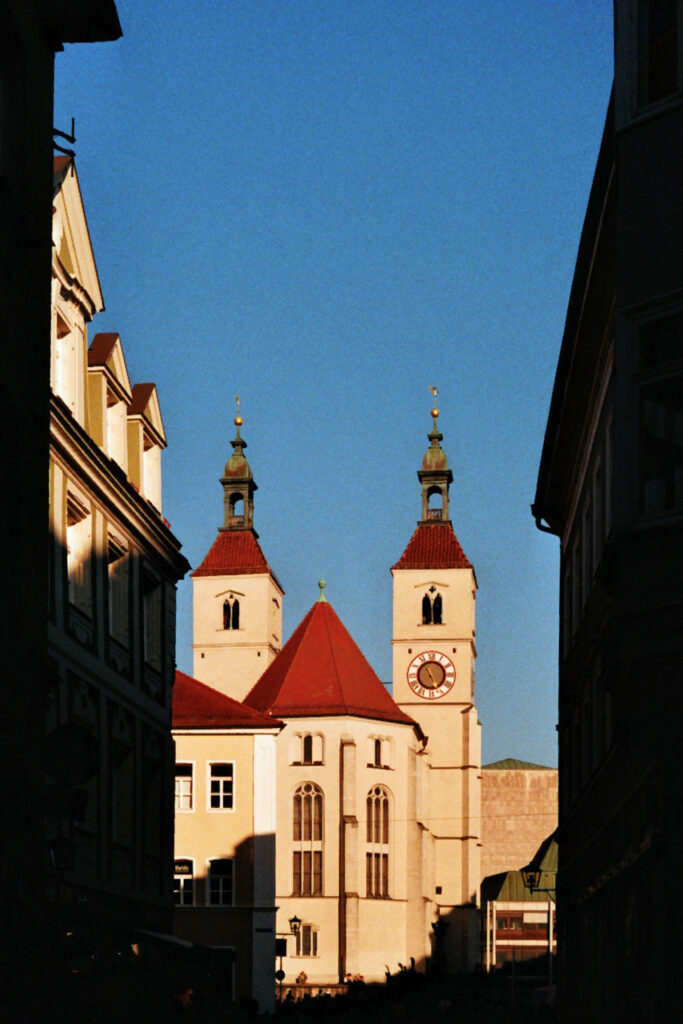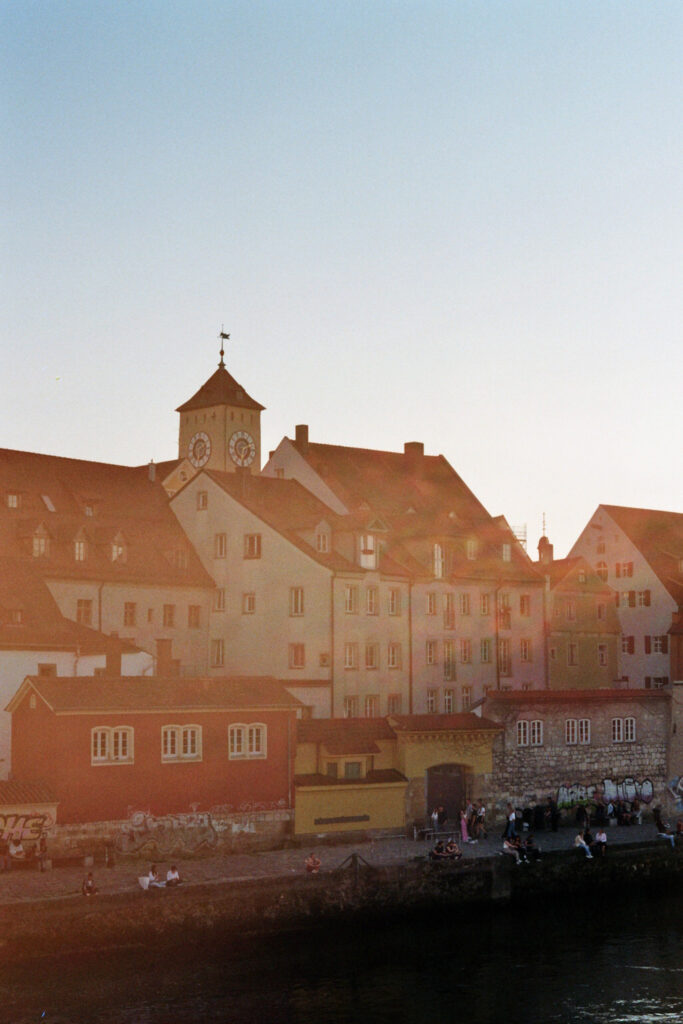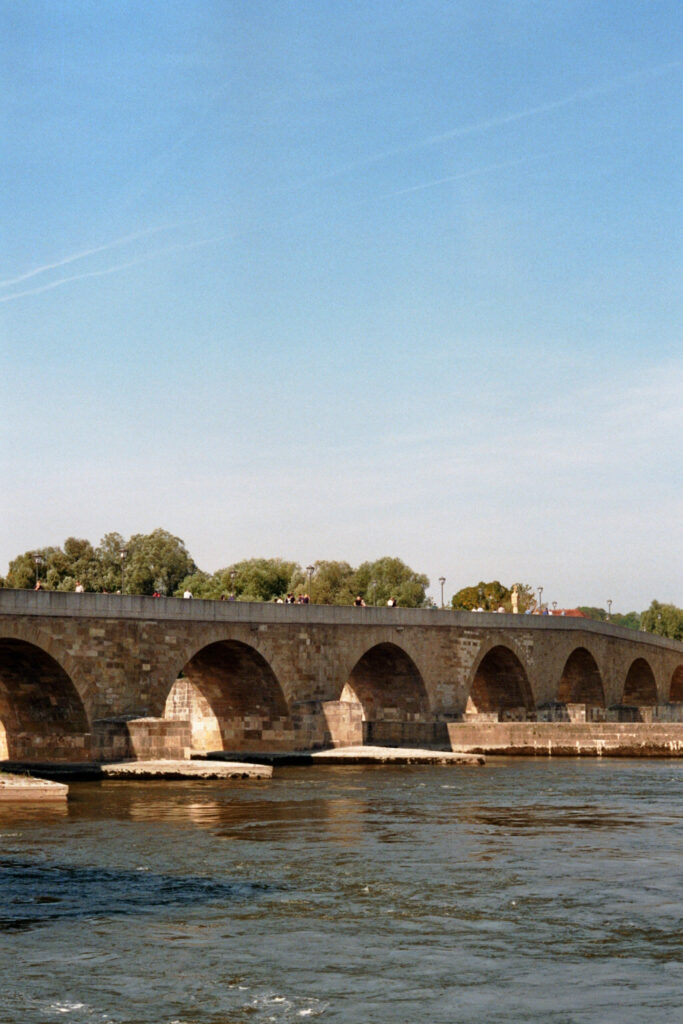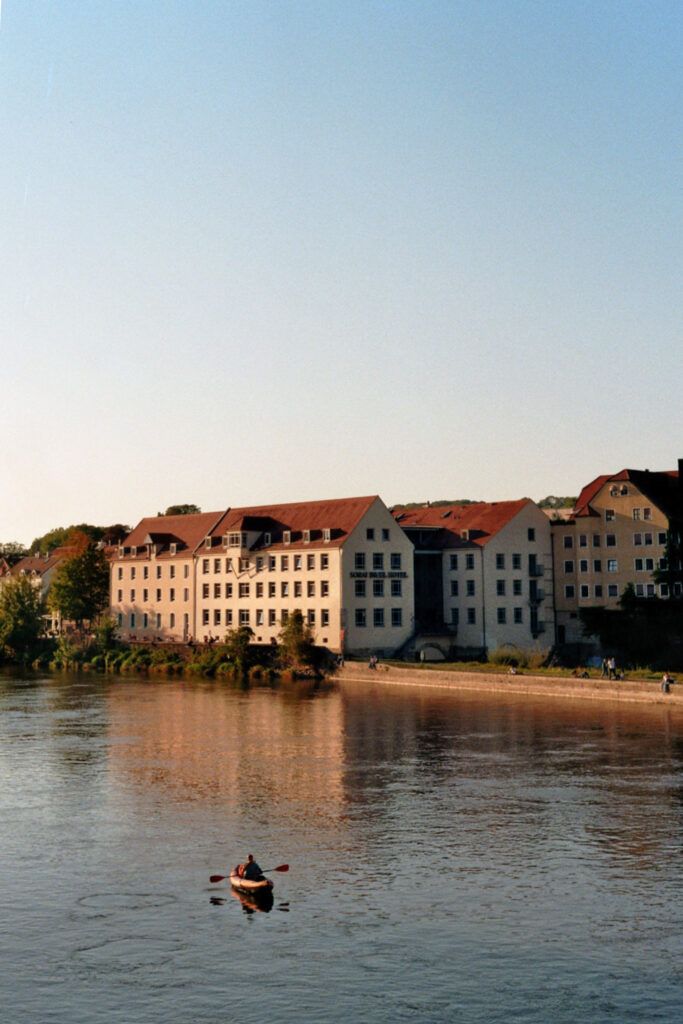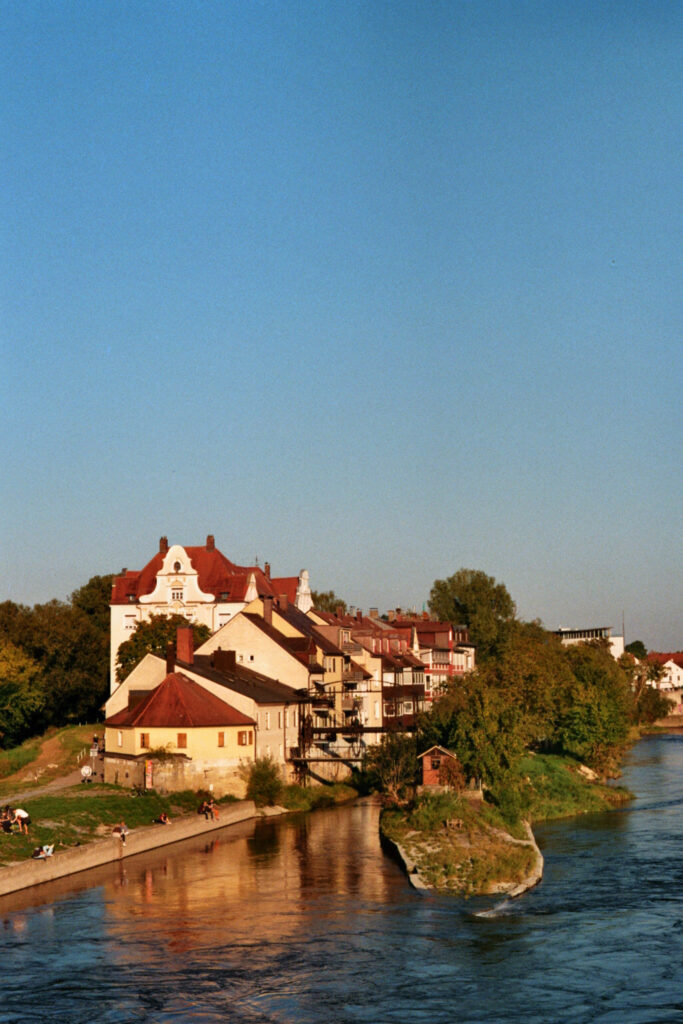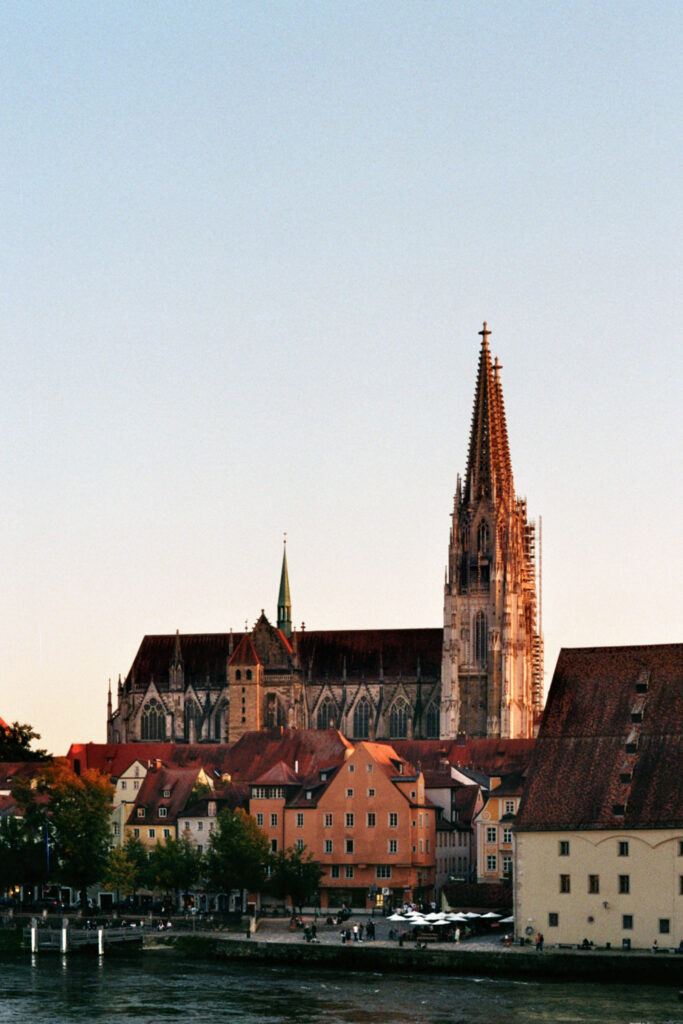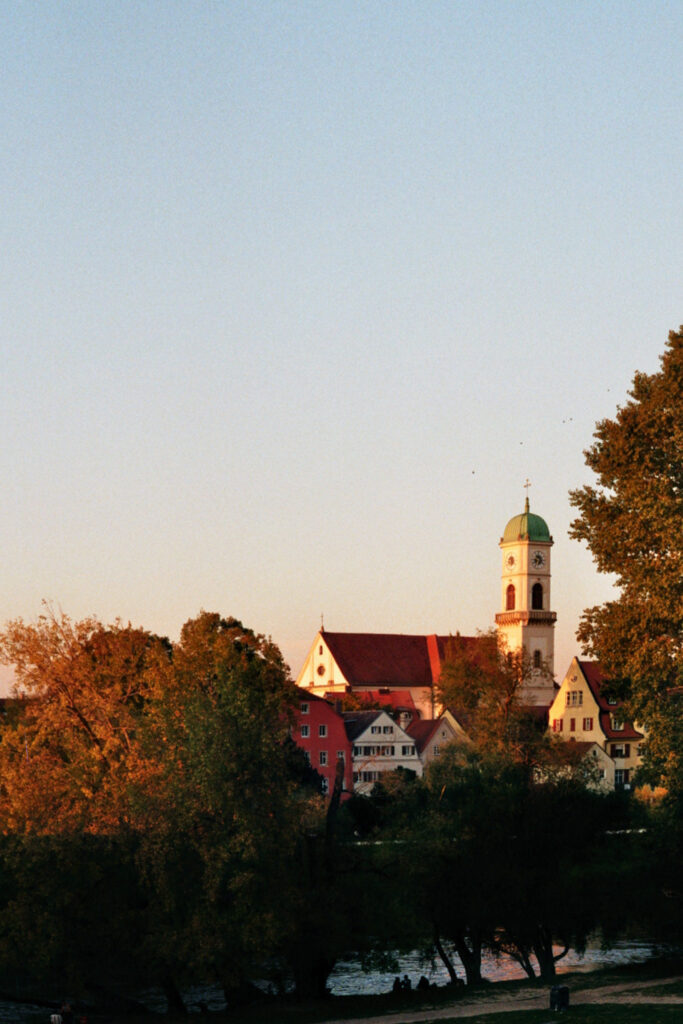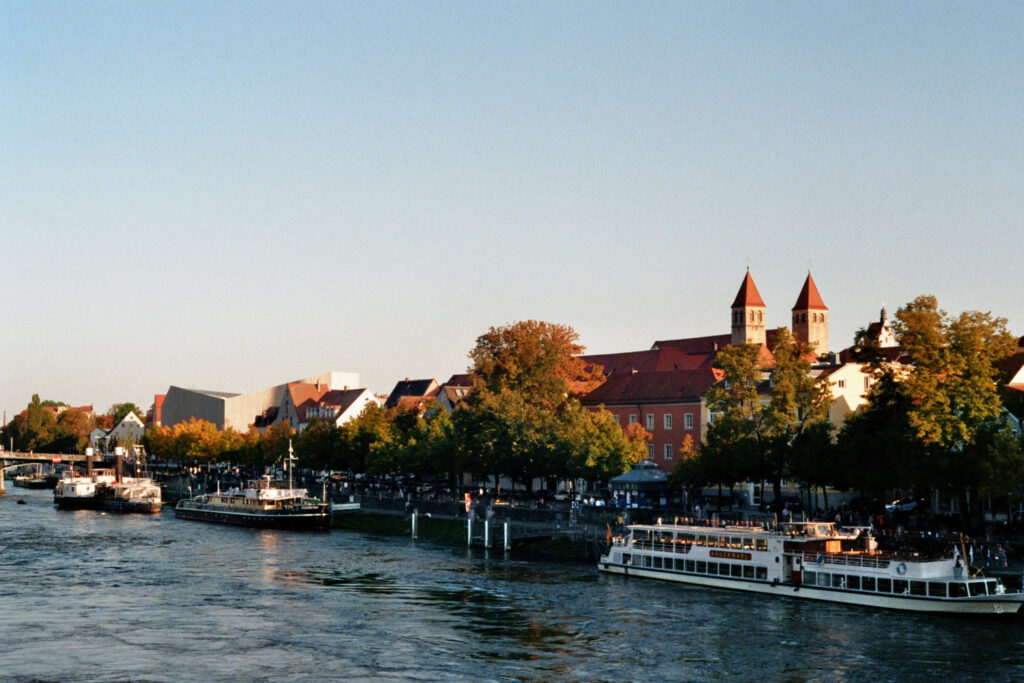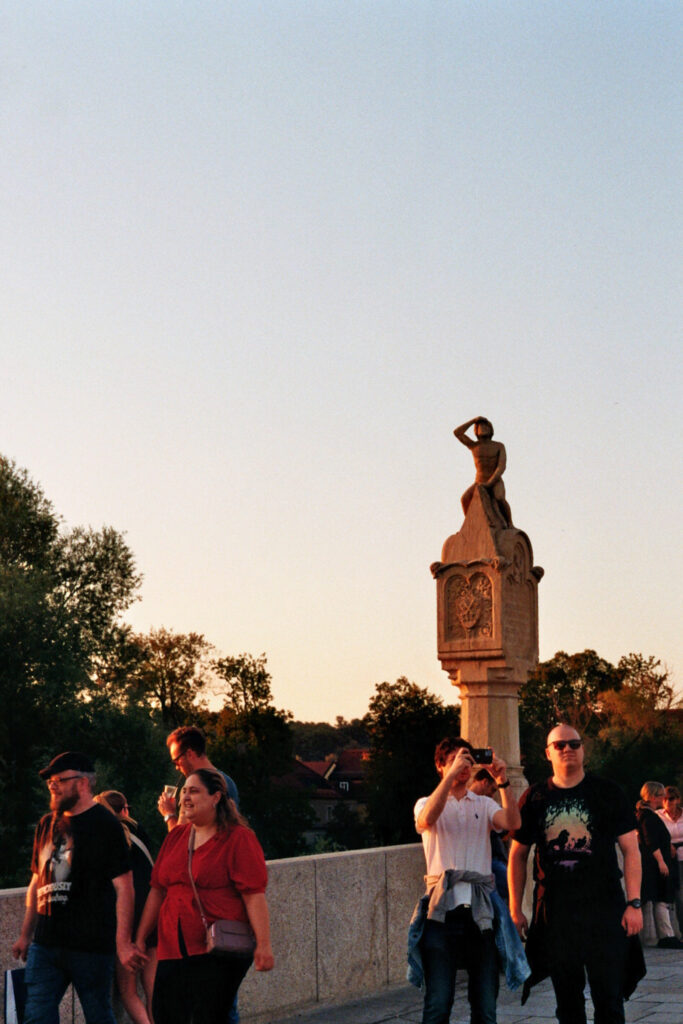The bus pulled into Brussels just after 4 p.m., the kind of arrival where the city reveals itself in glimpses. The first thing we saw was the north of the city – towers of glass and steel buildings; where the European Union flexes itself. It was sleek; suits and briefcases, electric shiny black cars driving men in expensive ties and a stark lack of personality on first impression, but this glimpse of the city was such a contrast to the version of Brussels we’d come to explore later.
Our hostel provided us with a good laugh at the strange set-up of the room and the awkward interactions with our roommates for the next couple days, as we stashed our bags and grabbed a minute to breathe. The air was warm, humid in that way cities can be in the summer, and without the coastal breeze that we had quickly gotten used to, the pavement seemed to hold onto the heat long after the sun started its descent. We headed out, following the slow pull of curiosity toward the old city.
The streets tightened as we went, their stone edges softened with age. When we settled into some comfy seats on a side street somewhere, ordered a drink and began to people-watch, we realised that we had accidentally sat across from Manneken Pis, that tiny, odd little statue with a reputation bigger than it has any right to be, but a comical people watching spot all the same. Tourists crowded around him, snapping photos and pointing, as if they’d found a hidden treasure instead of a fountain with a boy peeing in it. Watching the scene unfold, it was one of those funny moments where either by coincidence or probability, I was reminded of just how much there is to see within heritage cities like this, and just how many people do go out of their way to see all they can. It was a lovely reminder that heritage, culture, and things that spring from these can manifest in such seemingly silly ways and integrate themselves into the memories of so many tourists to the place.
We passed shops spilling over with tourist bait—tapestries, chocolates, and the kind of trinkets destined to collect dust on a shelf, but ultimately each commodity reflected the history of the city in one way or another. I quickly learned that textiles and tapestries have long been integral to Brussels’ cultural heritage, with the city emerging as a hub for fine weaving during the Renaissance. Renowned for its intricate designs and vibrant colours, Brussels’ tapestries adorned royal courts and cathedrals across Europe, symbolising its wealth and artistry. Today, these masterpieces remain a testament to the city’s craftsmanship and its enduring influence on European decorative arts and here they were, like jewels in the windows of tourist shops after hours as something anyone could own, with any design they could think of. Further on, the vibe shifted. Groups of men on stag dos weaved their way from bar to bar, their voices rising and falling with every sip. It was loud, messy, and oddly endearing. Beer, drinking and enjoyment seems equally important in the cultural “making” and identity of the place and its modern draw — even if the rowdy tourists must cause havoc for the locals.
Then came the Grand Place, and everything quieted down, even if just for a moment. The tight street opened up to the large square, lit up like it was putting on a show, the golden facades gleaming under the dark night sky. It was spectacular, sure, but also approachable—people laughing, leaning into conversations, or simply standing still, taking it all in. We stayed a while, letting the sounds and lights soak in. This was Brussels at night, a mix of the grand and the everyday, and a place well deserving as the last destination on our trip.
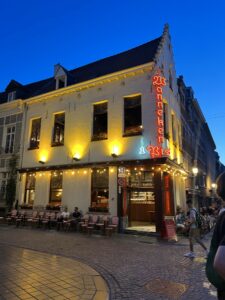
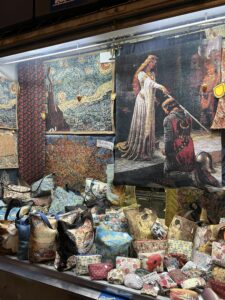
Day two began the way good days often do—over coffee. Just two doors down from the hostel, we found a café that was still figuring itself out. Shelves half-built, a faint smell of sawdust lingering in the air –and on the tables if I recall correctly — but the coffee was already excellent, the music hummed out of trendy Marshall speakers, and the staff greeted us as if we were friends ordering two oat milk flat whites, rather than touristing strangers translating their at-home order to this new city.
With caffeine doing its job, we made our way to the metro. The plan was to start in the east and work our way back, ticking off some of Brussels’ cultural highlights along the way. First up: Ixelles. Rob, our friend from Luxembourg, had sung its praises, and it didn’t disappoint. The neighbourhood carried an easy charm, the kind of place where the past doesn’t demand attention but quietly holds its ground.
We meandered through Marolles, where the flea markets seemed to spill out onto every available surface; we’d heard Brussels was a good spot for vintage finds and Ben’s sister Martha’s birthday was coming up, so we kept our eyes peeled for any suitable treasures to return home with. After eavesdropping on fast-paced haggling amongst our own browsing, our route back was lined with Tintin murals, their bold colours and mischievous energy a reminder of Belgium’s love affair with comics and our own personal affinity for the childhood characters.
Next came the Palais de Justice, a beast of a building perched against a sky that had turned grey – very different from our two weeks of Mediterranean blues. Its imposing stone facade was a clear reminder of Brussels’ place at the crossroads of history.
By the time we looped back to familiar streets from the night before, the city felt more intimate, easier to navigate. I ducked into the MIMA gallery across from our hostel—a fantastic space buzzing with energy. The highlight was an exhibition by a Portuguese street artist whose massive works hover between decay and reinvention; this exhibition was a good chance to catch something contemporary mixed into our heritage trip. Ben joined me briefly before stepping back into the streets ready for the evening.
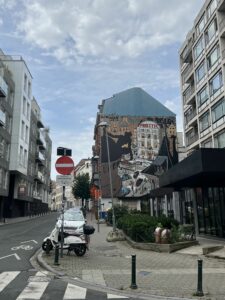
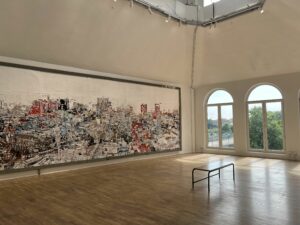
We hunted for record stores and live music, threading our way through beer halls and winding alleys. It struck us how often Brussels felt like a cousin of home—the ornate stained glass, the textured details on facades, and the easy rhythm of its pubs felt comfortably familiar. I couldn’t stop taking photos, drawn again and again to the way the city caught the evening light and further even in the dim glow of street lamps. I (Laura) think I took the most photos on this stop of our trip than anywhere else.
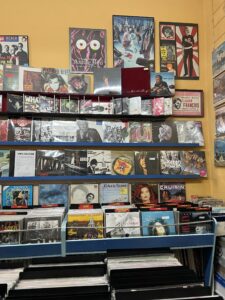
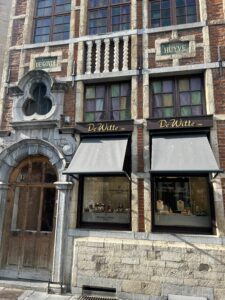
Later, after more walking than I’d like to admit (likely in circles, may I add) , we found ourselves in a Korean spot before heading onwards to the next stop, savouring bold flavours in contrast to the chips, waffles and other salty-carby foods that both Brussels and home serve very well. We accidentally had drink in what I can only assume was a puppet theatre, clearly after the hours of showtime with the marionettes safely away for the night in their closed-off stage but still lit up as the bartenders swept up and stacked the chairs. Finishing the night at the infamous Delirium village, the beer house(es) were chaos in the best way, a swell of voices and clinking glasses as people leaned into the shared joy of their drunken night.
It was our last night together, the tail end of a trip that had already become something to remember. And as we watched the ebb and flow of strangers around us, Brussels carried us along one last time.
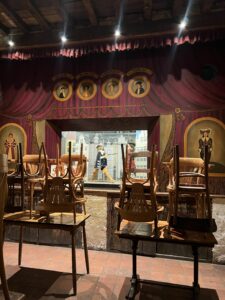
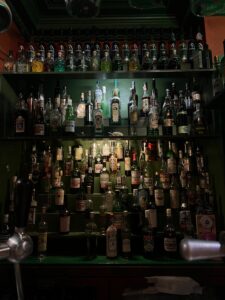
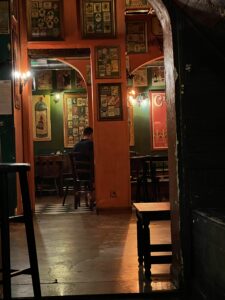
The last day in Brussels began as most final days do—groggy and slightly rushed, packing up in a half-awake state and leaving the hostel as early as two travellers in our condition could manage. We made our way back to the same café, a now-familiar spot, where the coffee worked its quiet magic, setting us up for one last push through the city.
We hopped on the metro, returning to the Grand Place. I wanted to see it in the morning light. The square had a different energy during the day—less theatrical, more lived-in but still with the unavoidable hoards of excited tourists with their audio guides and craned necks toward the heights of the spires high above. We wandered into an old bookshop nearby, the kind of place that even smelled of history in that slightly damp but pleasant manner that old paper gives off. Archive boxes brimming with old postcards, museum flyers, and city relics tempted us, each piece a little echo of Brussels’ past. We picked up souvenirs—some for friends, some for ourselves—and lingered until lunchtime.
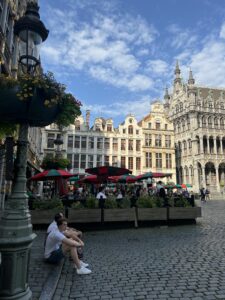
By early afternoon, it was time to part ways. Ben had a flight back to Scotland and the realities of work, while I was headed to Barcelona for a few more days with family. Pushed for time and a having friendship that didn’t need such things, any long goodbyes were avoided and we parted ways, I (Laura) set my sights on Mont des Arts, determined to spend my remaining hours in the museums of the royal quarter. The air shifted as I approached—the buildings grew taller, older, grander. A brief detour brought me past the Music Museum, its Art Nouveau design as stunning as the treasures inside. But I had a single destination in mind: the Musée Magritte. I arrived and paid my entry, which was wonderfully cheap, clinging onto my status as an EU “youth” for one last year.
For years, I’d thought of visiting this place. Magritte was the artist who first sparked my obsession with art—a love affair that had carried me through six years of study and culminated in my Fine Art MA. I can conclusively say that my interest in Magritte was a catalyst for where I am now: His art played a key inspirational role for me, after which, through a long chain-reaction of events, attempts and coincidences, have led me to the position I’m in today. Having received this OWHC award which funded this very trip alongside Ben, I was now standing in front of Magritte’s artworks which I had fallen for all those years ago. I felt acutely aware of an odd full-circle-contentment; something that you rarely catch yourself in except in hindsight.
The museum was everything I’d hoped for. It was intimate, beautifully curated, and, for someone like me, profoundly moving. Turning a corner, I stopped in my tracks upon seeing “Le Retour”, my favourite Magritte painting, which I’d assumed was housed elsewhere. Quietly, without meaning to, I became a little teary — I think a mix of gratitude, contentment, and awe for the strange ways life weaves itself together and ultimately wondering of how 14-year-old me would have reacted to this moment.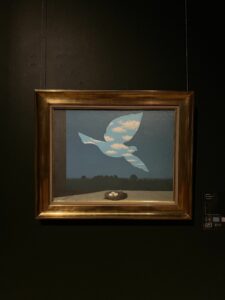
With no time to waste though, I explored the neighbouring National Art Museum before walking to the Royal palace. Perched on a low wall, I ate a quick lunch and let the city soak in one last time. The ornate architecture, the hum of life moving through its streets—it was hard to pull myself away.
Finally, I wandered back into the part of Brussels I now knew well, taking in every detail as though to store it for later. By evening, I was on a flight back to sunny Spain, carrying with me the echoes of a city that felt like a meeting point—between history and modernity, art and life, and, perhaps most poignantly, between the past and what comes next.
